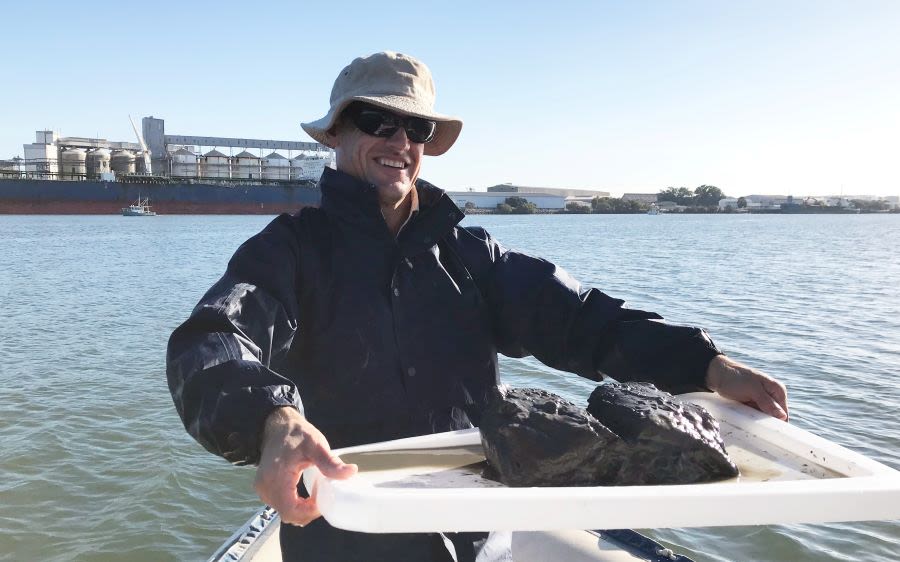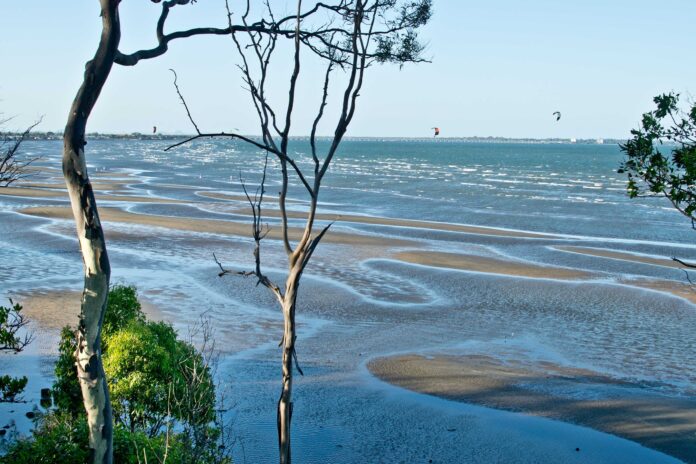In the vast, shallow bay that sits off southeast Queensland, a dead zone is steadily growing with each new flood.
When big rain events hit – as they frequently have in recent years – powerful torrents of water scour away degraded landscapes, river banks and streams.
The result is a damaging dump of muddy water that’s smothering the bottom of Moreton Bay and changing what can survive there.
Crucially, that includes seagrass meadows that sustain turtles and dugongs and provide critical habitat for other marine life.
University of Queensland researcher Alistair Grinham has spent years studying bay health and has just published a paper on the effects of the 2022 flood in the waters off Brisbane.
He found it dumped mud across a staggering 98 per cent of the bay, further compromising the shrinking area of clean sand it has left, and fuelling the growth of muddy dead zone in the bay’s central region.
“Over the past 50 years, 300 million cubic metres of mud has been washed into Moreton Bay – enough to fill 300 Suncorp stadiums,” Dr Grinham said.

“A lot of it has collected in the central bay where the water is deeper and wind and tidal currents can’t disperse it. This is where a big mud zone is growing and puts at risk the great habitat wealth of Moreton Bay.”
Nutrients in the sediment are compounding the problems.
“We estimate the amount of ammonium the sediment is contributing to the bay’s water to be equivalent to 180 years of sewage plant discharges,” he says.
“When you load a system with nutrients and mud like this, phytoplankton thrive and block sunlight reaching the seabed which is already being smothered by mud and these factors changes what can live there.”
Dr Grinham warns there’s an urgent need to rehabilitate southeast Queensland’s major river catchments and minimise how much material is washed into the bay.
“Without restoration work, eventually Moreton Bay will not be able to bounce back from a flood event.”
If authorities need proof of the pace and scale of ecosystem changes, he points to one sobering statistic.
In 1970, Moreton Bay had about 400 square kilometres of clean sand. It now has just 30.
Meanwhile, another University of Queensland researcher has used sediment samples to produce a new estimate of how much microplastic pollution is in the bay.
“The level of plastic contamination we found is equivalent to three Olympic swimming pools full of plastic or 1.5 million single use plastic bags,” says Elvis Okoffo.
The main types of plastic detected were polyethylene, which is used in plastic food wrapping, bags and bottles, and polyvinyl chloride, or PVC, used in pipes, building materials, electronics, and clothing.
It’s the first study to quantify plastic in the bay, and one of the few that’s quantified microplastic pollution in coastal areas around Australia.
Dr Okoffo says one of the next steps will be to examine the level of plastic contamination in organisms that live in the bay.
Both research papers have been published in the peer reviewed journal Science of the Total Environment.
Do you have an opinion to share? Submit a Letter to the Editor at Sunshine Coast News via news@sunshinecoastnews.com.au. You must include your name and suburb.





